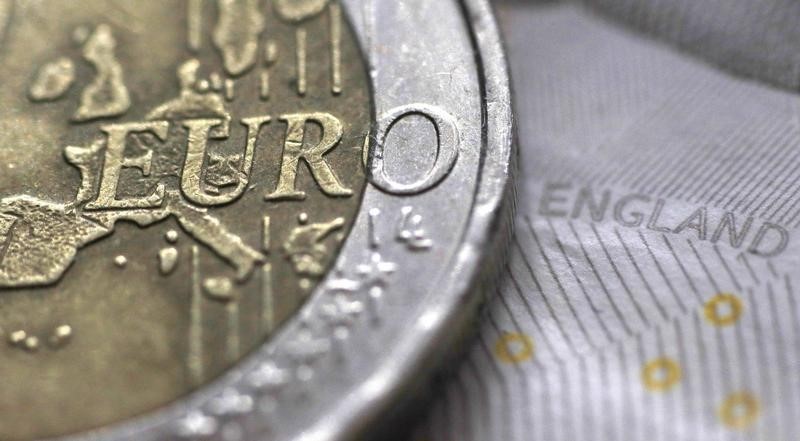Investing.com - The euro was lower against sterling on Thursday, pulling away from almost 10-month highs after data showing that British retail sales slowed in July but still beat expectations.
EUR/GBP was down 0.27% at 0.9103 by 05:12 a.m. ET (09:12 a.m. GMT) from around 0.9119 earlier.
The pair touched a high of 0.9142 on Wednesday, the strongest level since October amid expectations that Brexit will be more damaging to the UK economy than the euro zone.
Retail sales rose 0.3% in July the Office for National Statistics reported, above forecasts for an increase of 0.2% but down from 0.6% in June.
Compared with a year earlier, retail sales rose 1.3%, missing forecasts for 1.4% and slowing from 2.8% in June.
Sales in almost all categories of goods other than food fell in July, the ONS said.
"The underlying trend at the beginning of 2017 showed a relatively subdued picture for retail sales," said ONS statistician Ole Black. "Whilst the overall growth (in July) is the same as in June, trends in growth in different sectors are proving quite volatile."
Clothing sales fell by the most since December 2016 the report said, after hotter than normal weather boosted demand in June.
With inflation continuing to outstrip wage growth households are facing a squeeze on living standards as the fall in the pound after last year's Brexit vote pushes up the cost of imports.
Sterling was little changed against the dollar, with GBP/USD at 1.2894.
The euro was lower against the dollar with EUR/USD slipping 0.26% to 1.1734, moving back towards the previous session’s three-week low of 1.1680.
The euro had weakened following reports that European Central Bank President Mario Draghi will not deliver any fresh monetary policy message in his speech at the Fed’s Jackson Hole conference later this month.
The U.S. dollar index, which measures the greenback’s strength against a trade- weighted basket of six major currencies, was up 0.15% to 93.55.
The dollar remained on the defensive after minutes from the Federal Reserve’s latest meeting raised doubts about whether the central bank will hike interest rates again this year.
Fed officials were split over the timing of future interest rate increases amid concerns over a recent string of sluggish inflation reading, the minutes of its July meeting showed.
Expectations that rates will rise more gradually tend to weigh on the dollar, as they make the currency less attractive to yield-seeking investors.
Concerns over U.S. President Donald Trump's ability to implement his economic policies after he disbanded two high-profile business advisory councils also weighed.
